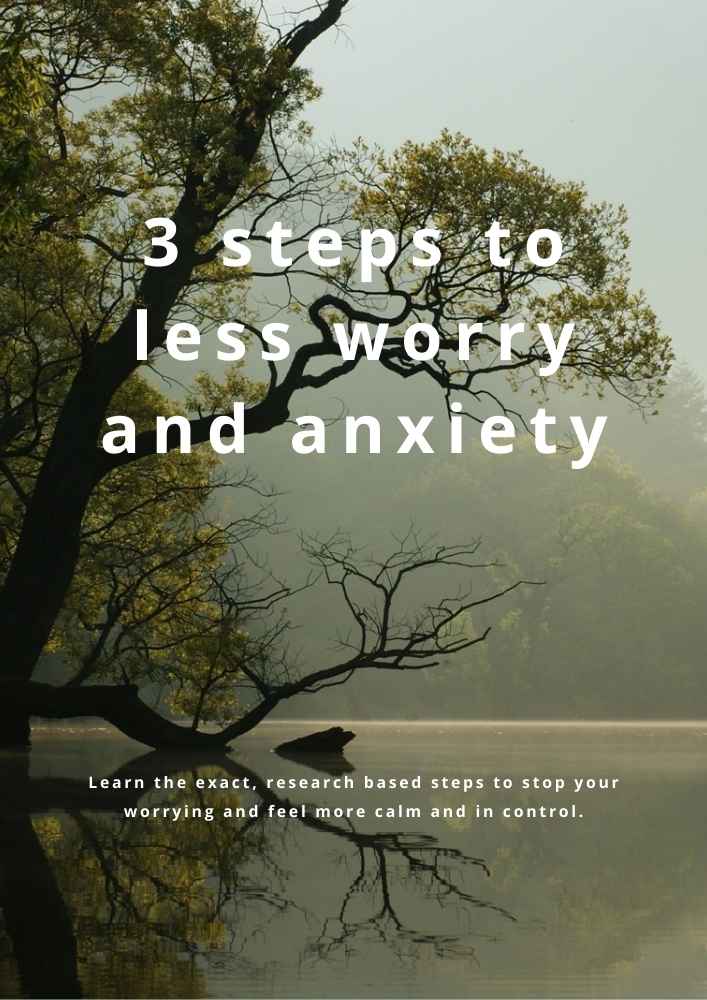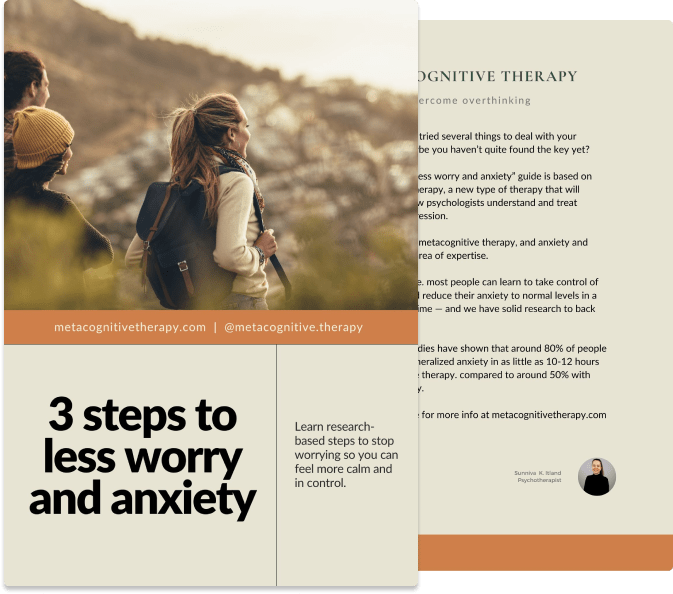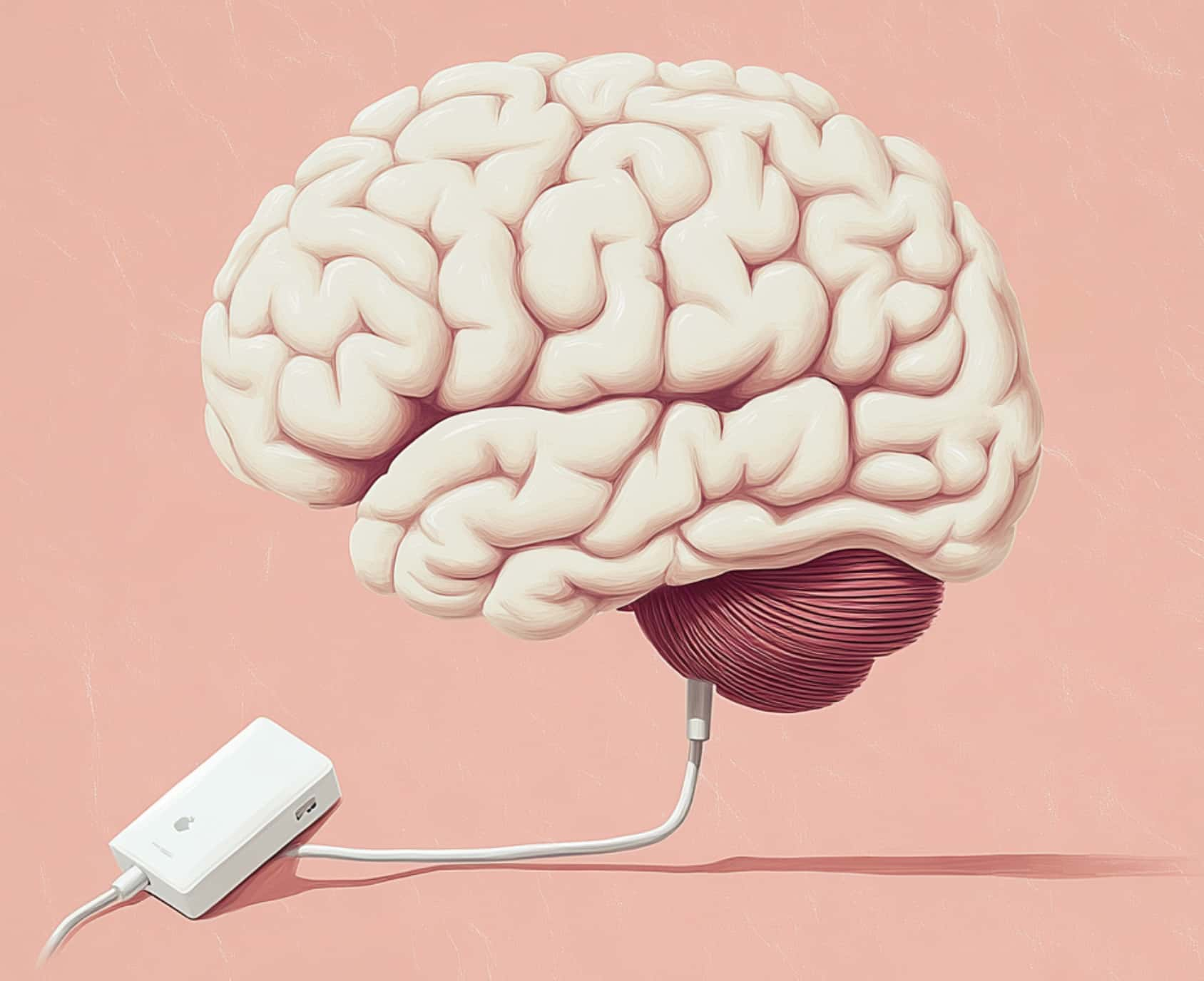If you feel like you have no triggers for anxiety, read this

Download our best tips on reducing anxiety and worrying
Learn three powerful metacognitive therapy steps to stop the worry cycle, reduce anxiety, and feel calmer in everyday life.


Learn to spot anxiety triggers and break the cycle using metacognitive therapy with actionable tips for managing your mental health.
A lot of people who struggle with ongoing anxiety find it hard to identify their trigger thoughts. It might feel like there's no trigger at all — the anxiety is just there.
But that doesn't mean there are no trigger thoughts. So why don't you notice them? If you’ve spent a lot of time trying to figure out why you feel anxious or down, it can be hard to separate trigger thoughts from rumination and worrying.
What is a trigger thought, and why can it be hard to identify them?
A trigger thought is simply the first thought that popped into your mind and that you started worrying or ruminating about. Think about it: If you're worrying or ruminating, there must have been an initial thought that started it.
So why does it feel like there's no specific trigger? This can happen when you've spent a lot of time ruminating and worrying about your symptoms or mental state. Over time, that rumination creates a flood of negative thoughts that make it feel like the anxiety is constant. It becomes difficult to notice where it starts and ends, and instead it feels like your thought stream consists of a constant stream of negative thoughts.
Still, you have trigger thoughts, and you can become better at identifying them (and disengaging from the ensuing worry and rumination).

Download our best tips on reducing anxiety and worrying
Learn three powerful metacognitive therapy steps to stop the worry cycle, reduce anxiety, and feel calmer in everyday life.
What if my triggers aren't thoughts, but feelings or symptoms?
Can a trigger be a feeling or a symptom? The short answer…no. Many people feel like their symptoms or feelings are the problem, but it's their worry about the symptoms or feelings that causes ongoing anxiety. So if you have anxiety about certain symptoms or feelings, the trigger thought is the first thought that you have about that symptom or feeling.
The trigger thoughts might sound like:
- Oh no, there it is again.
- What if it gets worse?
- Why do I keep feeling this way?
If you engage in this thought by worrying or ruminating, then it is a trigger thought.
Many people probably have the same symptoms or feelings that you have, but not everyone spends a lot of time worrying or ruminating about them. If you have anxiety, chances are that you do.
Why is it important to identify the trigger thought?
The problem isn’t actually the trigger thought (it’s completely normal to have them), it’s how we respond to it and what we believe about it. But the first step is recognizing what that initial trigger thought is, so we can break the cycle. When we separate the trigger from how we respond to it, we can engage less with the trigger — and that's the difference between getting a negative thought that comes and goes, VS ruminating about it.
Your brain works like an algorithm
Think of your mind like an algorithm on social media: if you constantly click on scary, click-bait articles about a certain topic, your feed will become flooded with similar content. The more time you spend reading those articles, the more social media will keep showing them to you.
Your brain is like that, too. If you frequently engage with anxious thoughts, your mind will assume that these thoughts are important and continue to present them to you. You can’t stop articles and thoughts from popping up in your “feed”, but you can control how you respond to them. By choosing not to engage with them, you can reduce their frequency and impact. It’s not about eliminating these thoughts, but learning to stop feeding them with your time and attention.

How to break the anxiety cycle
- Notice the first thought you had when you started to feel anxious again. Are you ruminating on questions like:
- Why do I feel this way?
- What if it gets worse?
- What if therapy doesn’t work?
- I will never feel better.
These are the trigger thoughts.
Even though this specific instance of anxiety might have started with an upsetting event, a symptom, or a feeling, the trigger thought is still the first thought you had about it — the thought that initiated your worrying about the event, symptom or feeling, which feeds the anxiety cycle.
- Notice when your mood suddenly changes and you feel down. Are you ruminating on your thoughts or emotions?
- Don’t get super stressed about finding your trigger thought every time you feel anxious. It isn’t crucial to track the exact thought in order to solve your anxiety. You can still recognize your worry or rumination and stop feeding the anxiety cycle by interrupting your engagement with it. (If it feels important, schedule some time to come back to these worries later, if you need to.)
- Seek Professional Help: If you're having trouble understanding the difference between trigger thoughts and the cycle of rumination, book a session with a certified MCT therapist. They can help you identify your triggers, understand your anxiety patterns, and develop strategies to interrupt the cycle of worry and rumination.
Recovering from anxiety can be a gradual process, so be patient and compassionate with yourself as you try these strategies. But don't give up! Over time, it gets easier to notice your trigger thoughts and change how you respond to them.
For more information on metacognitive therapy and strategies to break free from anxiety, check out this article on five main causes of anxiety, and try our quiz to see if MCT could be helpful for you.



